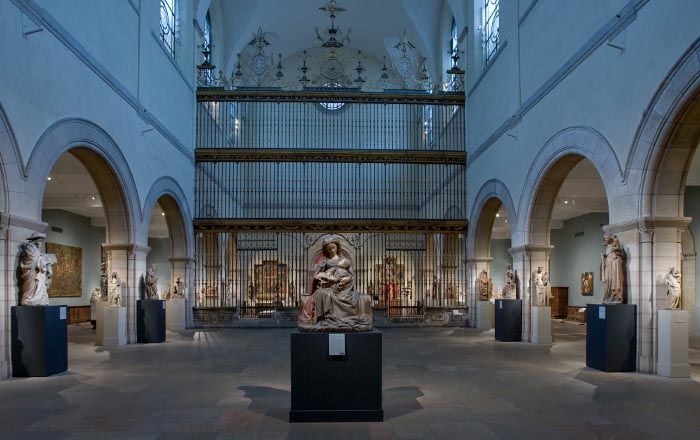Returned to lender The Met accepts temporary loans of art both for short-term exhibitions and for long-term display in its galleries.
Lamech
Not on view
Lamech was the son of Methuselah, the longest lived of all the ancestors (969 years) and the father of Noah. He represents the eighth generation after Adam. To many in the Middle Ages, the era of Lamech represented a time of accelerating sinfulness that led to the Flood. He is depicted with a nervous and unsettled energy, his torso and legs turned in opposite directions. His uneasy posture and ostentatious ivory throne could reflect Lamech’s perceived sinful character. The figure floats in space with no architectural framing. The wide Romanesque foliate border is comparable to the rich borders that enhanced contemporary illuminated manuscripts.
The figure of Lamech was originally in the bottom half of a clerestory window in the north wall of the choir at Canterbury below Methuselah. The window was probably moved to the Great South Window in the 1790s. The border panels, which remained in the original clerestory window, have been temporarily removed and are here reunited with the figure for the first time in more than two hundred years. The upper half of the original window with Methuselah is outlined.
This image cannot be enlarged, viewed at full screen, or downloaded.
V2.jpg)
